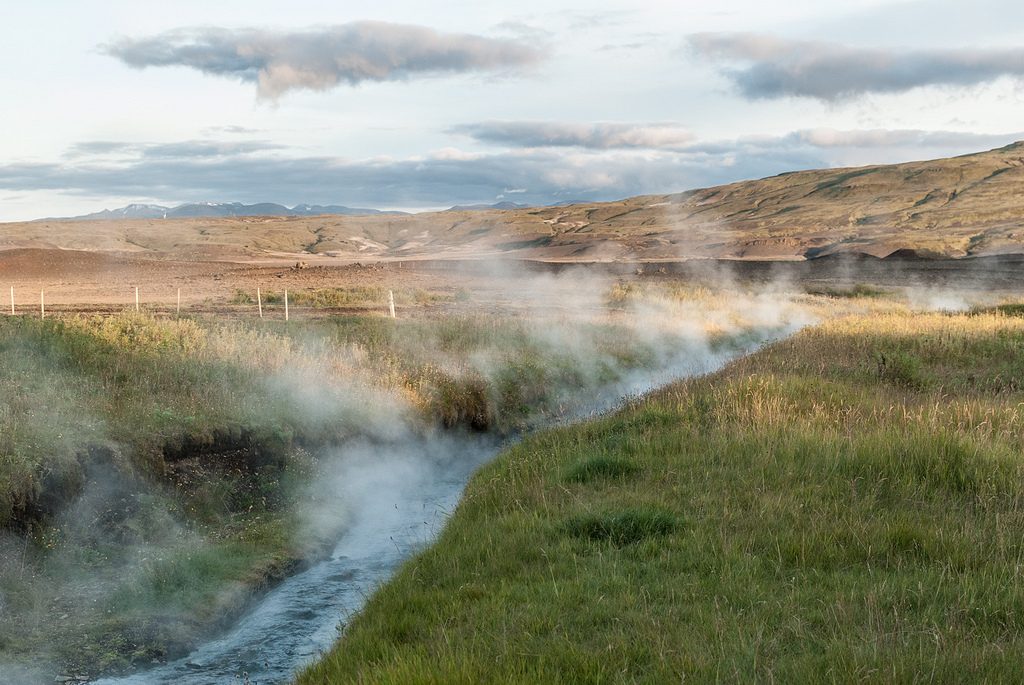The unused potential of medium enthalpy geothermal resources in Iceland
Iceland is not all about high-temperature geothermal resources and has large unused potential from medium-enthalpy resources, so a recent study by a researcher of Iceland GeoSurvey.
Iceland has been a one of the leading nations in the use of geothermal energy, both for power generation and heating applications. But what is less known not all utilisation of geothermal resources in the country is based on the high-temperature high-enthalpy resources. Lower heat resources across the country are being used for heating homes, swimming pools and various other purposes. But overall the medium-enthalpy resources of the country remain unused.
At a recent seminar held on the occasion of the 50th anniversary of Iceland’s National Energy Authority (Orkustofnun), challenges related to the country’s transmission system were discussed. The countrywide transmission system is loaded up to the tolerance limit and that next year it is possible that secure electricity transmission cannot be guaranteed. The demand for electricity exceeds the supply. One option to counteract this is to look for local solutions and examine the smaller scale options that are available in both hydropower and geothermal energy.
About 38 medium enthalpy geothermal systems which today are only partially used for space heating could produce up to 70 MW of electricity. The local power generation would ensure electricity for pumping in the district heating services and make them immune to disruptions in the electricity transmission system and less vulnerable to catastrophes like earthquakes in the seismic belt of the plate boundary or damaging water floods from glaciers. Moreover, the local capacity will increase energy independence of individual counties and reduce the need for electricity supply to them from power plants in the volcanic zones with associated negative visual impacts of power lines.
The seminar also reviewed the feasibility of small geothermal plants. Such plants utilizing effluent from conventional geothermal power plants are likely to increase in numbers in the coming years. The feasibility of these plants depends heavily on the price of electricity and in Iceland electricity prices are low. By harnessing together the electric and thermal potential the efficiency is increased. Furthermore, it is both economical and desirable to locate the power plants in developed inhabitated areas.
At the Seminar held in February, Björn Már Sveinbjörnsson, engineer at Iceland GeoSurvey, ÍSOR, introduced the research report “Medium Enthalpy Geothermal Systems in Iceland – Thermal and Electric Potential“. The report describes success of 289 production wells drilled into 81 well fields in 37 medium enthalpy geothermal systems in Iceland, in the years 1928-2014. The systems that were selected for analysis met the criteria of 100°C, either recorded in wells or indicated by the silica concentration in the discharge.
Most of the wells were drilled vertically. Drilled depth was from 10 to 3085 m, an average of 632 m. Of the 289 wells 173 or 60% yielded water and 62% of them are still in use. Flow is known in 132 successful wells. The average flow of them is 17 l/s.
Of the 289 production wells, 193 reached measured temperatures of 90°C and they were further analyzed. Drilled depth spans from 52 to 3085 m, average 861 m. Of the 193 wells 149 or 77% yielded water, of which 104 or 70% are still in use. Data on flow were found for 132 of these holes. Average flow of them is 17.3 l/s.
Most wells (89%) had main feeders above 1000 m. Flow in the range of 0-10 and 10-20 l/s is the most common, respectively 47% and 27%. Only 2 wells have a flow above 62 l/s, one 100 and one 110 l/s. There are no indications that the flow is dependent on water temperature.
Wells with a flow temperature of 80°C are considered exploitable for space heating. They are 68% of the 193 wells. Holes with a flow temperature of 95°C are considered exploitable for generation of electricity. They are 57% of the 193 wells.
The 38 geothermal systems that were identified have a combined proven thermal power of 935 MW if utilized down to 35°C. If the thermal power from 29 systems is utilized for electricity generation down to 80°C, the potential would be 44 MW of electricity and the effluent water would involve a thermal power of 494 MW for direct use from 80°C to 35°C. The ten largest geothermal systems have proven thermal power of 37 to 132 MW and electric potential from 1.0 to 7.4 MW.
The geothermal system in Ölfusdalur valley above Hveragerði in SW-Icland is on the verge of being classified as a high-enthalpy or high temperature system. The thermal power above 35°C is 334 MW. If it is used for electricity generation down to 80°C, the potential would be 25 MWe and the effluent water would involve a thermal potential of 86 MW for direct use from 80°C to 35°C.
This report is part of a project analysing the performance of geothermal drilling in Iceland and a contribution of Iceland to the International Energy Agency – Geothermal Implementing Agreement (IEA-GIA) and the International Partnership for Geothermal Technology (IPGT). The report is available at: http://os.is/gogn/Skyrslur/ISOR-2016/ISOR-2016-008.pdf.
Björn is also the author of the report “Success of High Temperature Geothermal Wells in Iceland” which can be accessed at: http://os.is/gogn/Skyrslur/ISOR-2014/ISOR-2014-053.pdf

This article was provided by the author of the research, Björn Már Sveinbjörnsson, Engineer at Iceland GeoSurvey (ÍSOR). The slides from the seminar (in English) and the actual lecture (in Icelandic) can be found here: http://secure.emission.is/player/default.aspx?e=0cc6e799-9470-4670-9105-78c42a0334b3


















